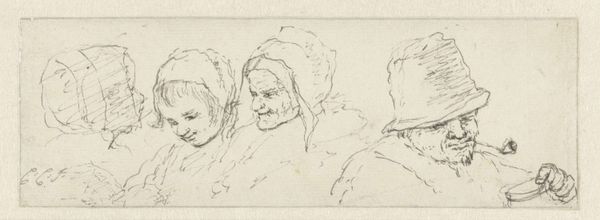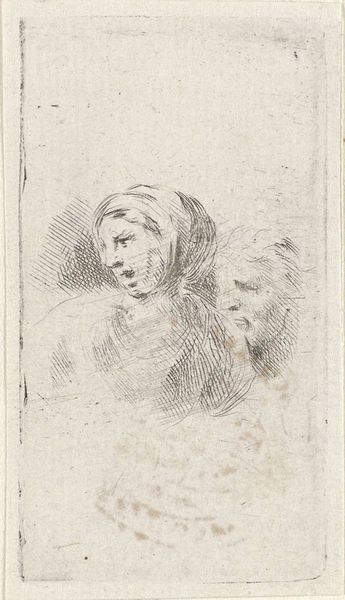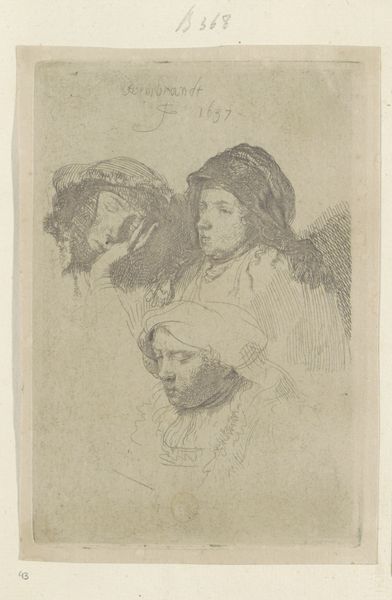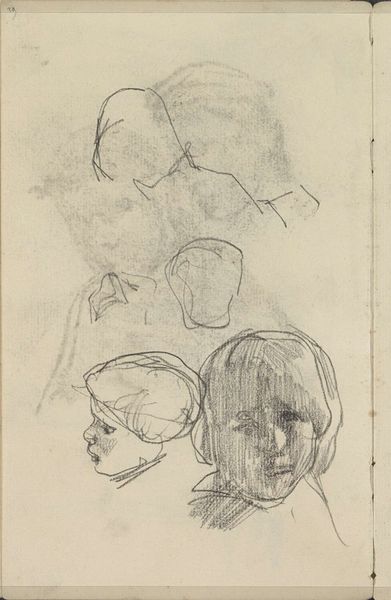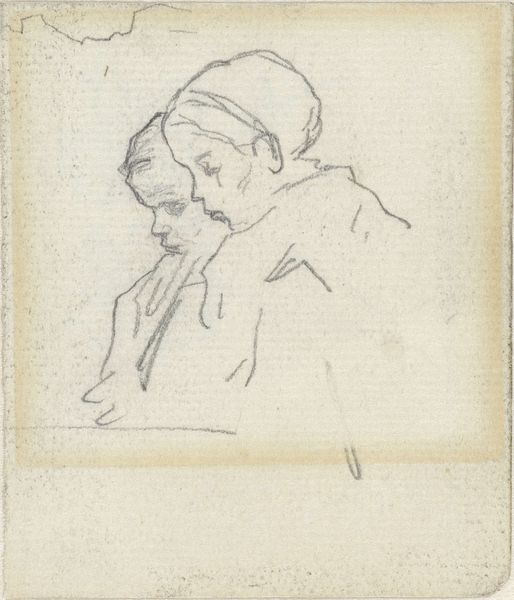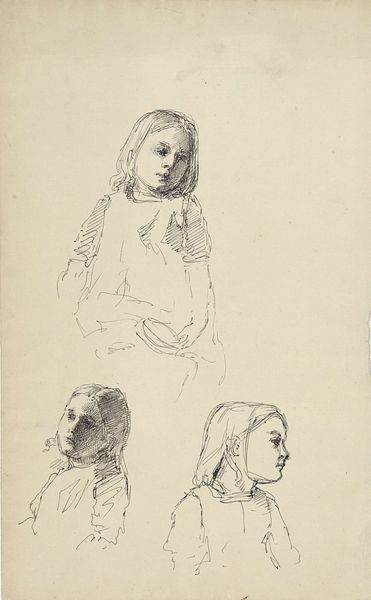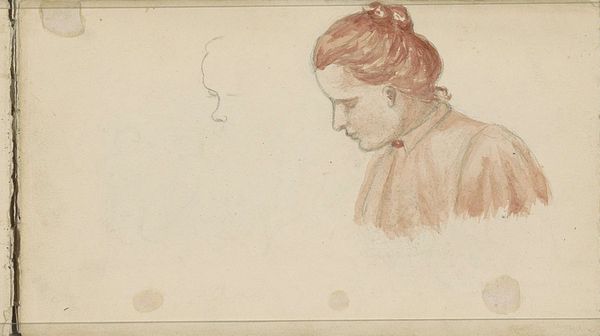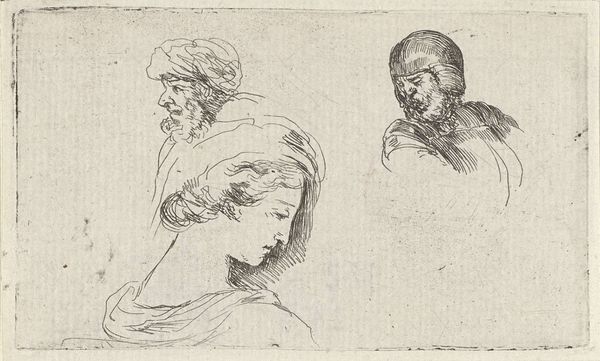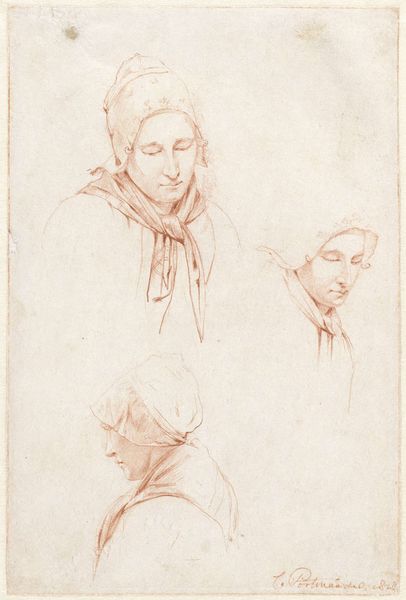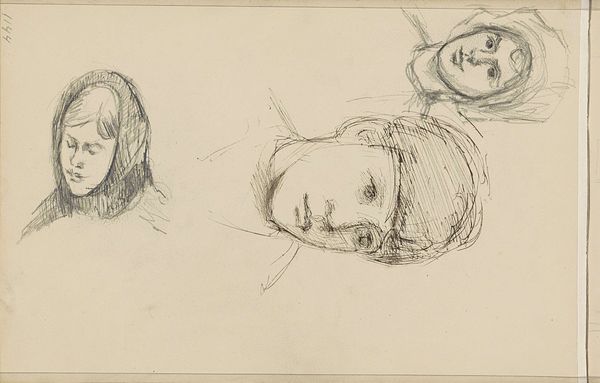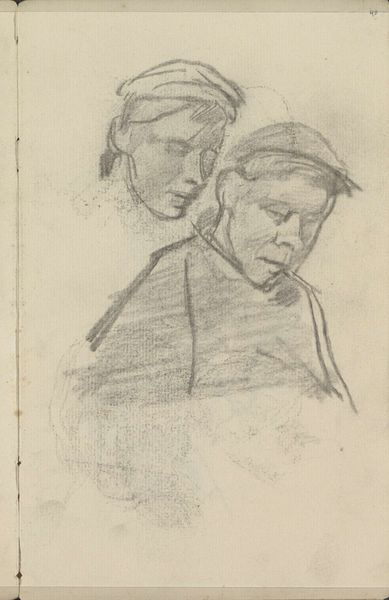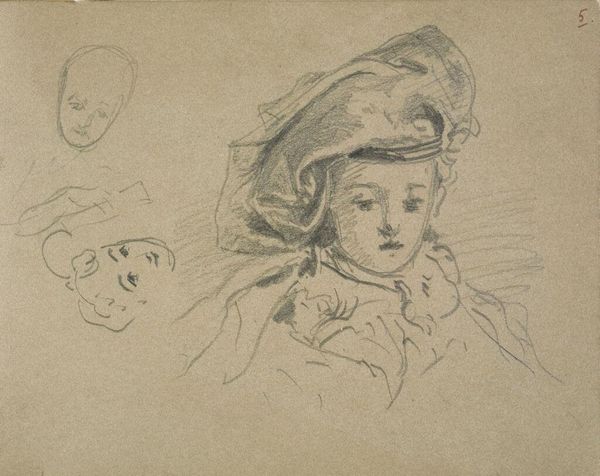
drawing, pencil
#
portrait
#
drawing
#
pencil sketch
#
figuration
#
pencil drawing
#
pencil
#
realism
Dimensions: height 208 mm, width 131 mm
Copyright: Rijks Museum: Open Domain
Editor: This pencil drawing, "Two Women's Heads," by Jozef Israëls, is really interesting. The way the artist uses cross-hatching to create shadows gives it a melancholic feel, like a glimpse into another time. What can you tell me about it? Curator: From a materialist perspective, I am interested in the use of readily available, inexpensive materials – paper and pencil – which democratized art-making in the 19th century. Pencil drawings weren’t just preliminary sketches for paintings; they were artworks in themselves. Consider also, what this piece may suggest about class and labor of both the artist and his subjects. What narratives are accessible and inaccessible within this medium? Editor: So, the choice of medium speaks to a shift in who could make and own art? The artist can take on any subject because of cheap production of pencil on paper, I presume? Curator: Precisely. And note how Israëls employs this accessible medium to portray these women. What social commentary, if any, is implied in portraying the subjects in this way? Editor: I suppose there is intimacy in the process. You know, capturing people so plainly, emphasizing their humanity… But beyond the drawing technique, can you tell me a bit about the women depicted here? Curator: As it is a drawing, rather than a full composition of the two women in full detail, we can think about these “heads” as products of their era and the process behind creating them. They likely represent archetypes and social standings of female personages common to the period during the artwork's original context. How would that change our perspective of their material position if they are not “actual” women? Editor: Interesting… Seeing it as a product helps break it down. The idea that simple materials reflect significant shifts in both artistic practice and potentially, social accessibility is great. I hadn't thought about that. Thanks! Curator: Indeed. Considering the material reality behind an artwork allows us to unpack complex social and historical narratives.
Comments
No comments
Be the first to comment and join the conversation on the ultimate creative platform.
